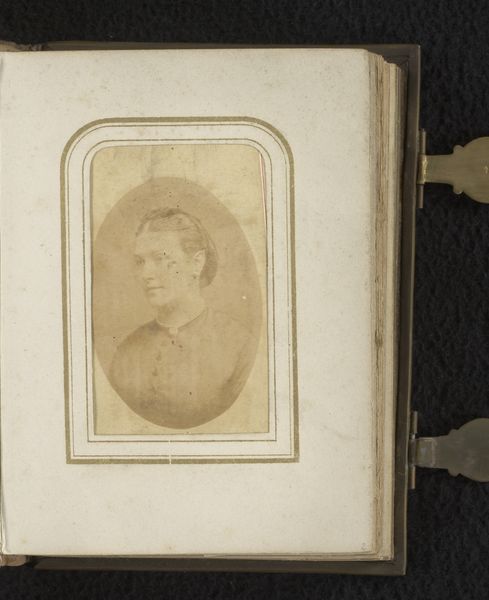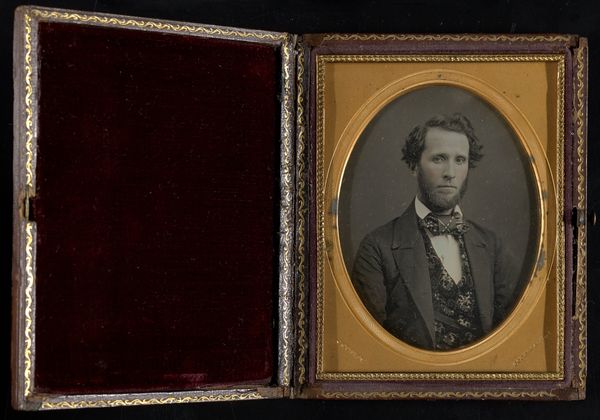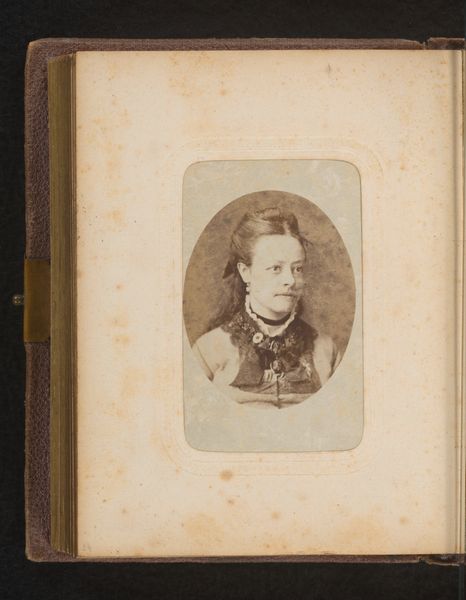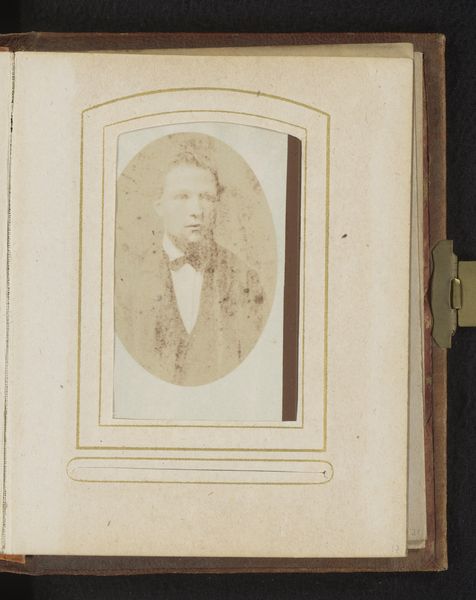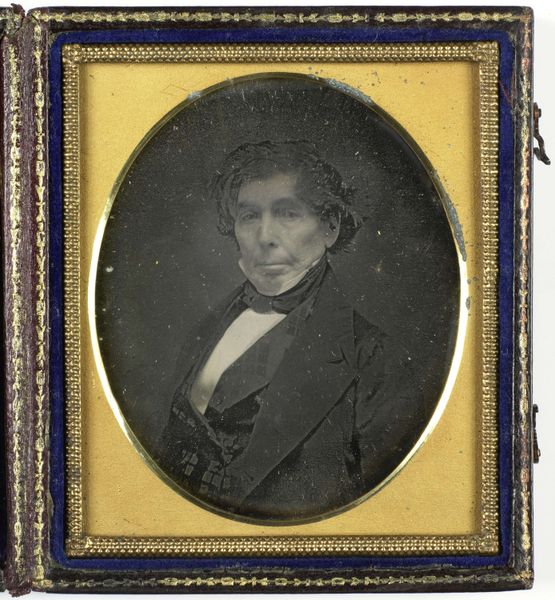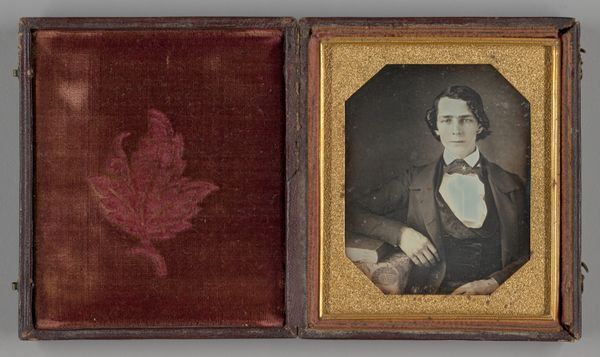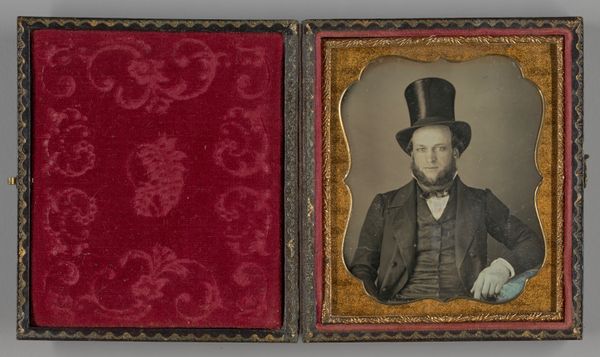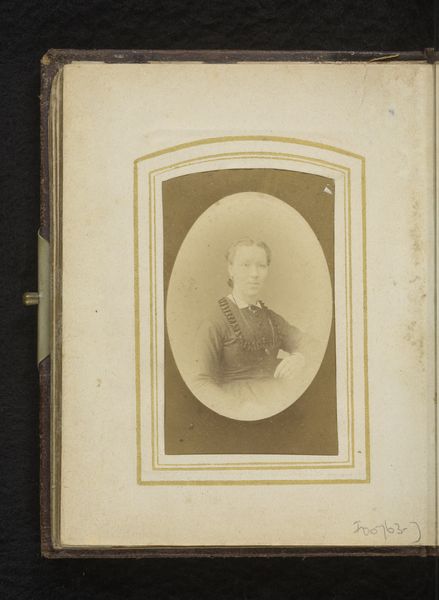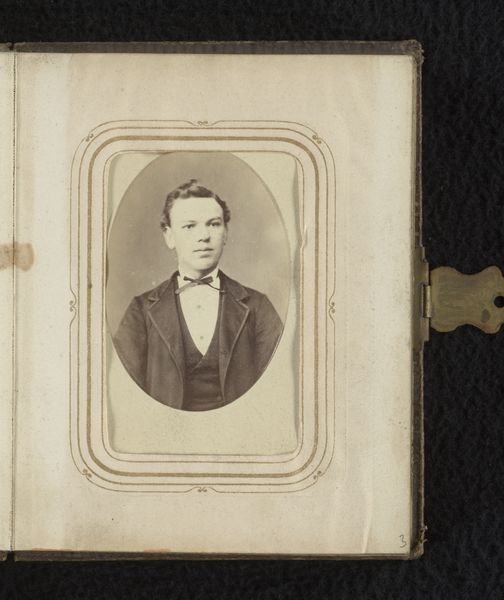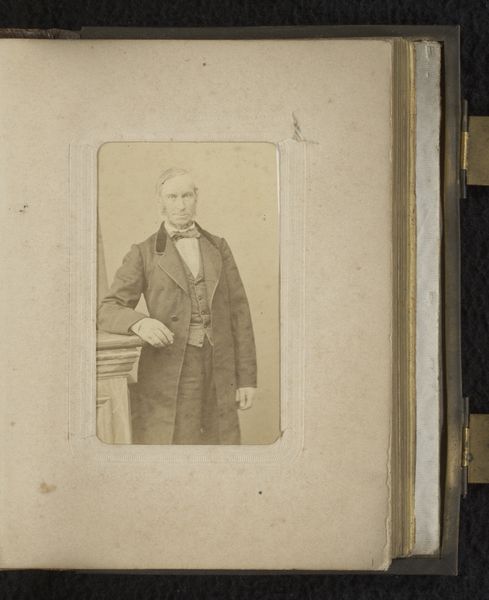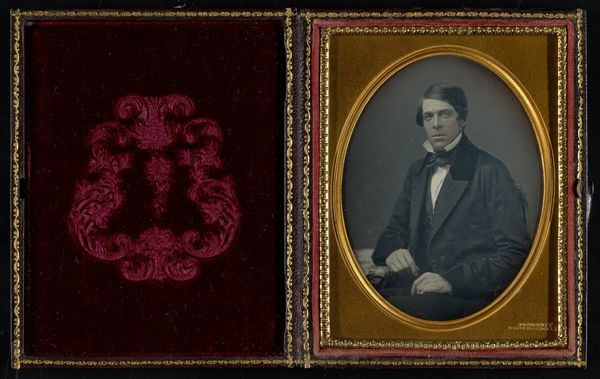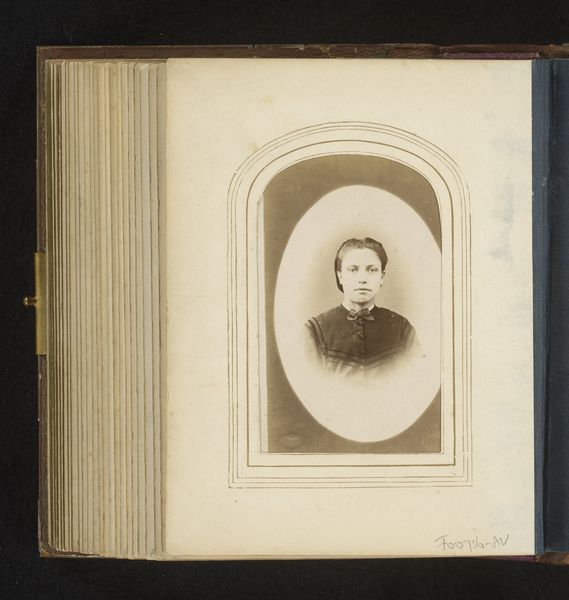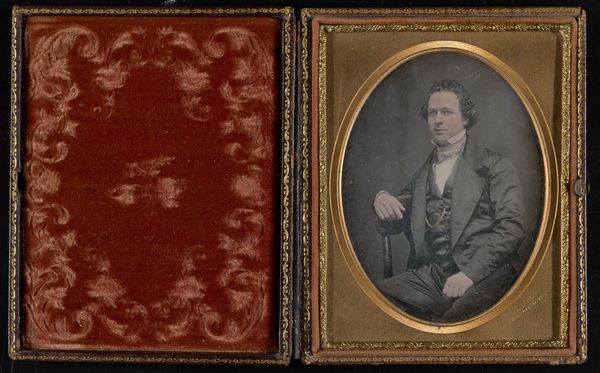
daguerreotype, photography
#
portrait
#
16_19th-century
#
greek-and-roman-art
#
daguerreotype
#
photography
Dimensions: 8.3 × 7 cm (plate); 9.3 × 8.1 × 1.6 cm (case)
Copyright: Public Domain
This portrait was made using the daguerreotype process, one of the earliest forms of photography, which captured images on a silvered copper plate. To create this image, the plate was treated with chemicals to make it light-sensitive, then exposed in a camera. The resulting image, a unique positive, was incredibly detailed but also fragile. To protect it, the daguerreotype was sealed behind glass in a decorative case, often made of wood covered in leather or paper. The daguerreotype was a revolutionary technology, yet it also demanded a collaboration between science and artistry. The photographer had to be skilled in chemistry, optics, and composition to produce a successful portrait. Because of the cost and time to make them, daguerreotypes were luxury items, mainly for the upper and middle classes, but soon became more accessible, offering a new means of documenting likeness and status. Looking closely at the materials and processes reveals the daguerreotype as both a scientific marvel and a crafted object.
Comments
No comments
Be the first to comment and join the conversation on the ultimate creative platform.

